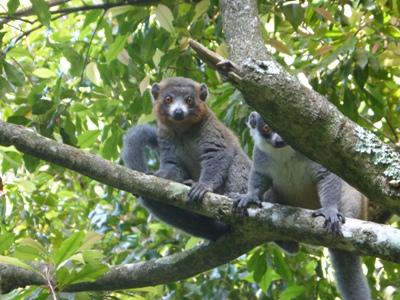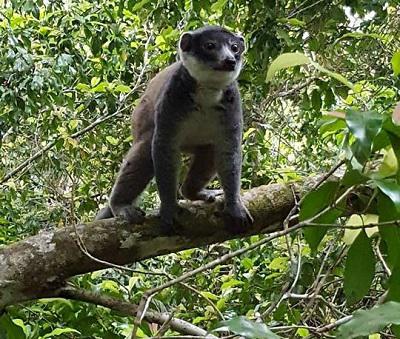Said Ali Ousseni Dhurham
Mongoose lemur is among the mostly threatened fauna by habitat loss in the Comoros islands. This species is highly threatened by a high rate of forest loss with a deforestation rate estimated to more than 9.3%, the highest deforestation rate in the world. For this species, little is known regarding habitat suitability and geographic distribution limits that preclude the development of relevant conservation plan. In this study, we aim at modeling ecological niche and habitat loss effect on niche selection by this species in order to assess relevant conservation action

Eulemur mongoz. ©Thani.
The mongoose lemur is a highly threatened species living in a very restricted and fragmented landscape in the Anjouan and Moheli islands (Comoros archipelago), but also in some fragmented forest in north-western Madagascar. This species faces a high rate of habitat loss estimated to be more than 9.3% in the Comoros islands where none of its habitat is protected.

Eulemur mongoz from Moheli. ©Thani.
The species is classified as critically endangered species by the International Union of Conservation of Nature while little is known regarding its geographic distribution limits and habitat suitability. Known the rate of habitat loss in the Comoros islands and the fact that the species lives on non-protected area in these two islands, assessing management planning for its populations is thus a challenge. Knowledge regarding species distribution and biogeographic studies constitute important basic needed information for conservation planning.